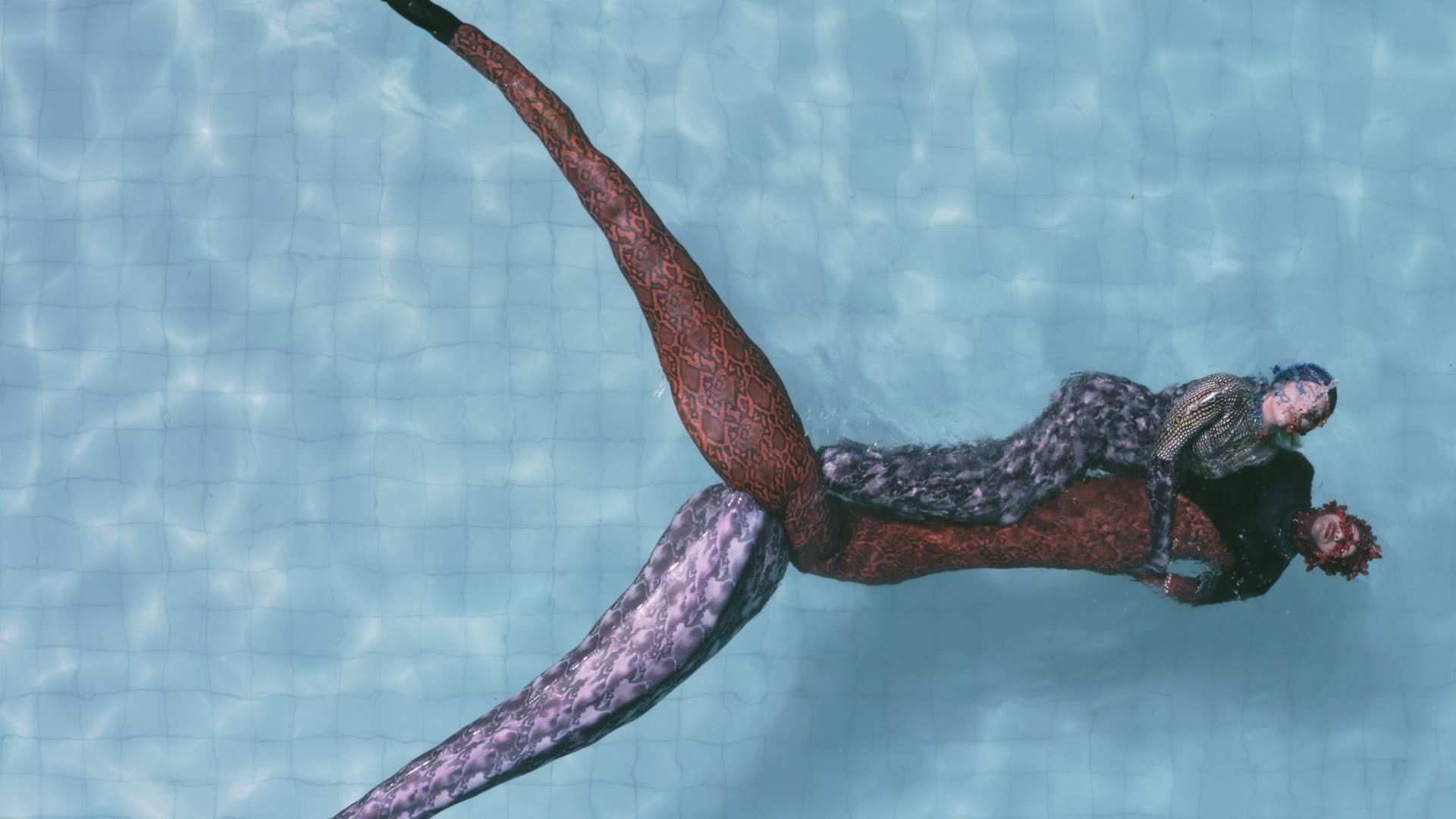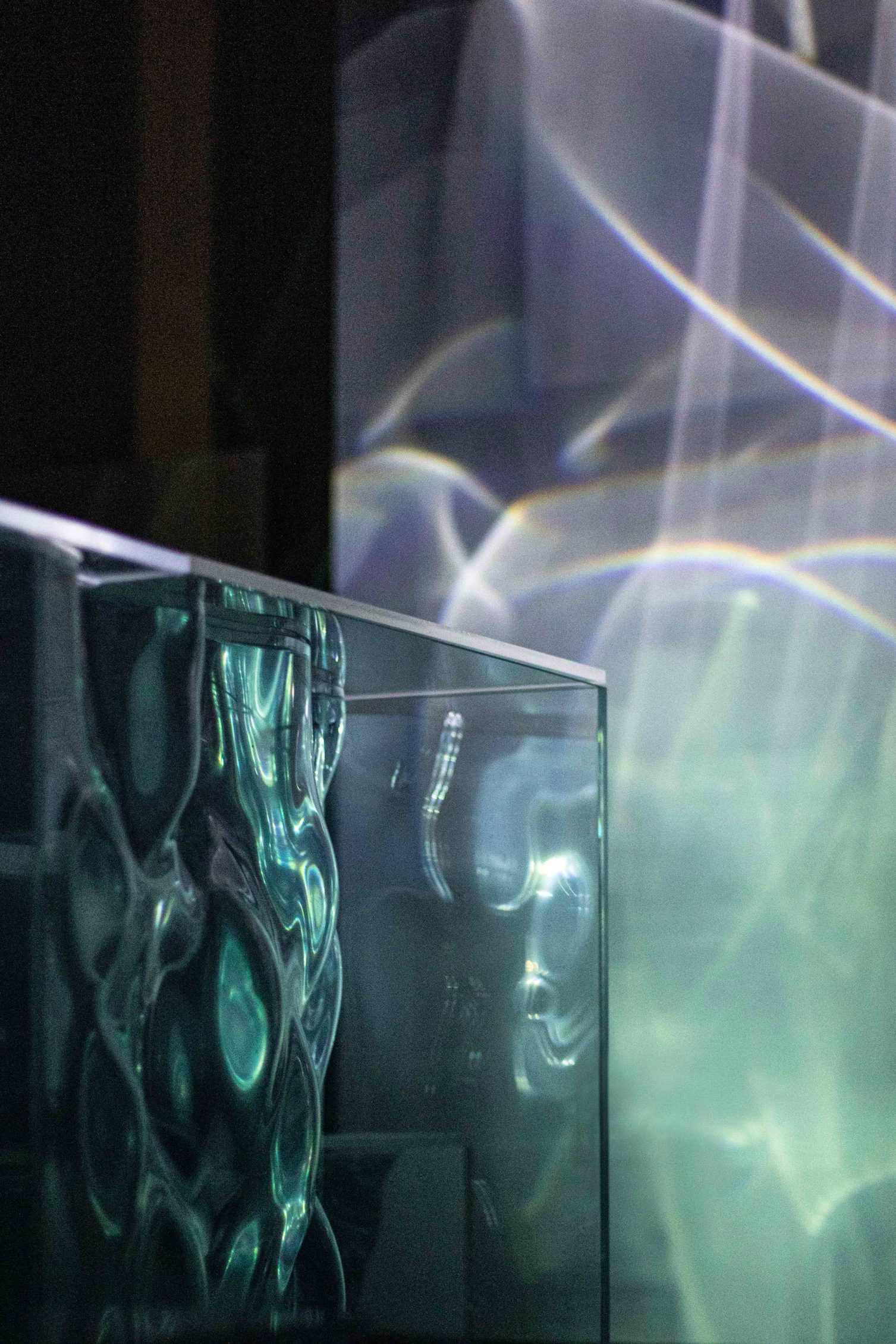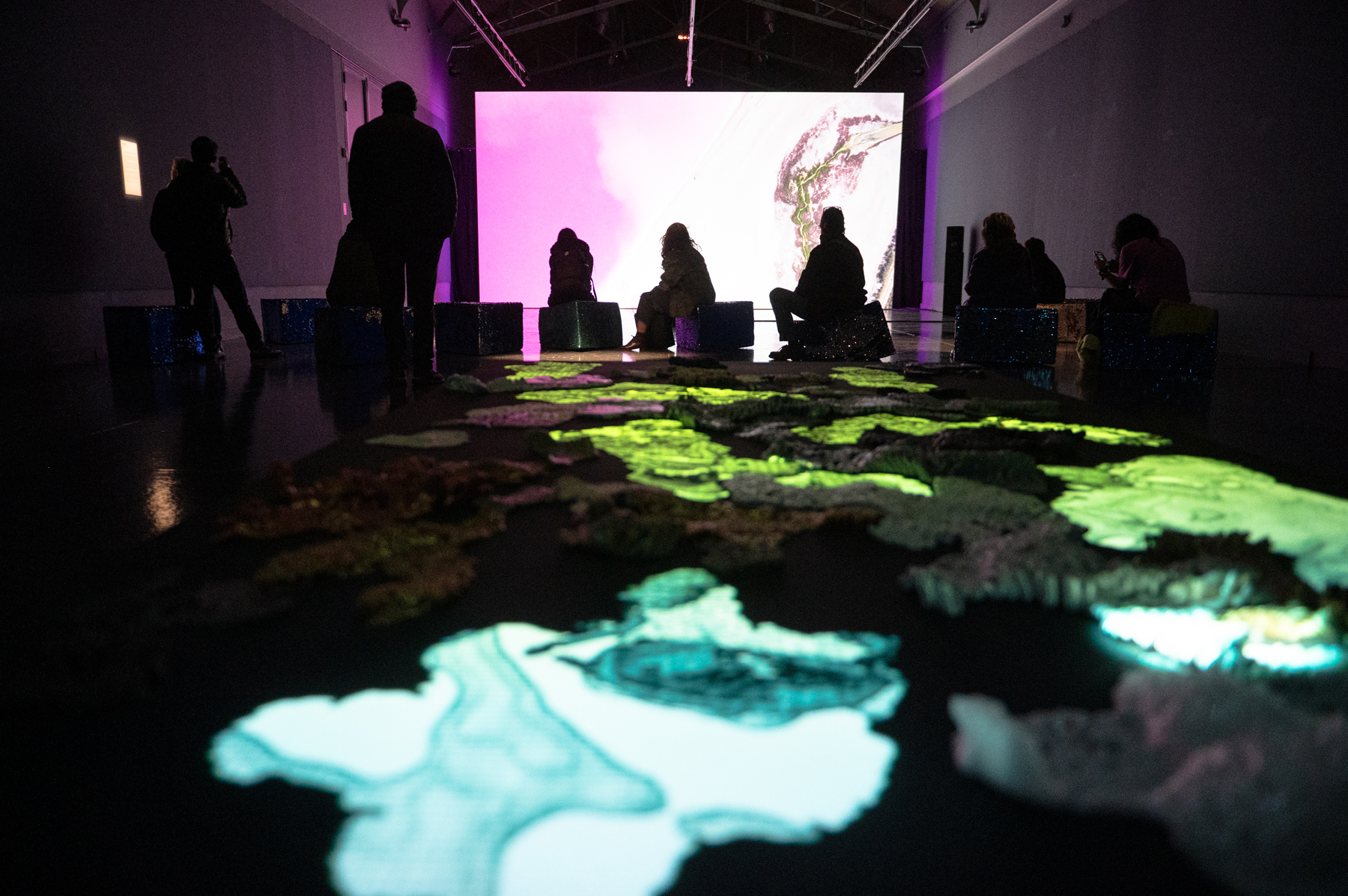Riparia
Emilija Škarnulytė
Rivers have nourished state-level societies from their very beginning. By providing both water and transit, the river has been critical to the formation of complex states, with all that implies. Indeed, the English word “rival” comes from the notion of multiple people who are required to share the resources of the river.
In the controversial theories of archaeologist and anthropologist Marija Gimbutas, peaceful and matriarchal societies thrived along rivers in Neolithic Europe before the arrival of Proto-Indo-Europeans, with goddess figurines being one of their few remaining visible traces. In her perspective, the riparian environment was transformed from a site of worship to a site of extraction and conflict.
Riparia proposes a visual crossing of the Rhône via Lake Geneva. Using scientific techniques of photogrammetry and underwater sensors, it follows the course of the water, beyond the waves, scraping the benthic seabed, the domain of the riparian and the lacustrine, to read the effects of human intervention. Considering time in its thickness, it’s an exploration of hydrology and its mythologies, poetically questioning what is happening in our landscapes and suggesting what might happen.



